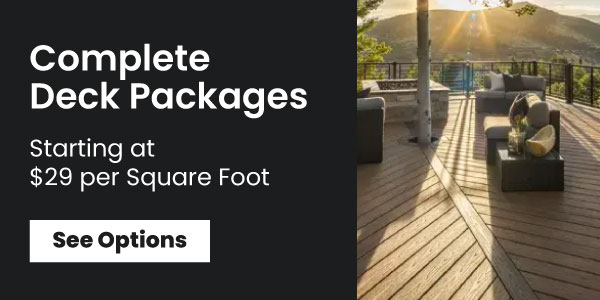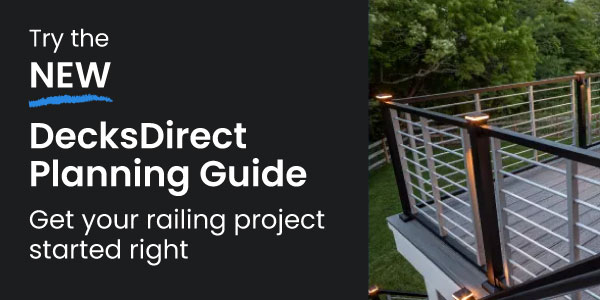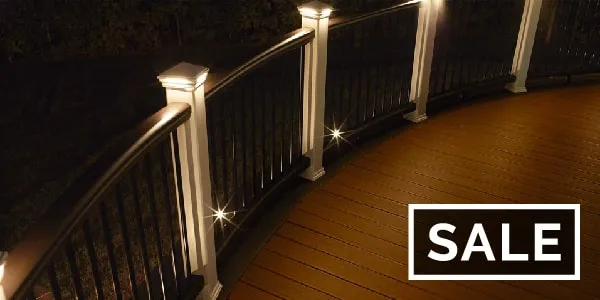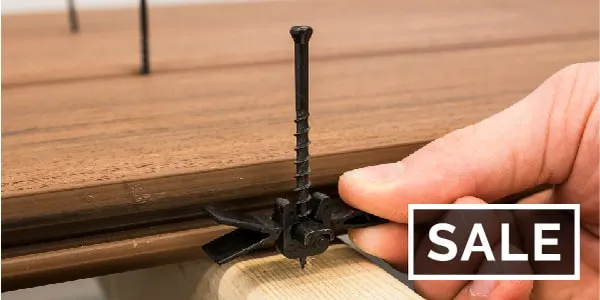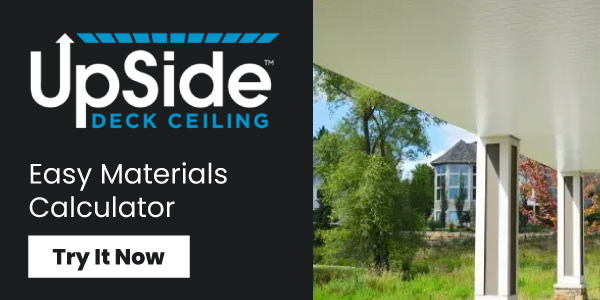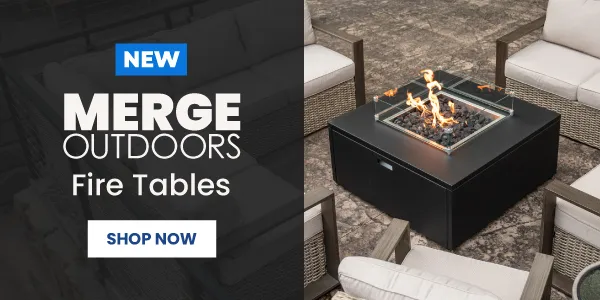Deck Board Size & Profile Options
Whether you’re designing a new deck or renovating a dated outdoor space into an ideal backyard oasis, choosing the right sizes and profiles for your deck boards can be a confusing process. Why so many options? What do they all offer? In all things decking, let DecksDirect be your guide - we’ll help you understand the different size and profile options available, and allow you to pick the ones that fit your project and lifestyle best. Read on for an overview, or give our team a call at 1-888-824-5316 to find out what profile fits your deck best.
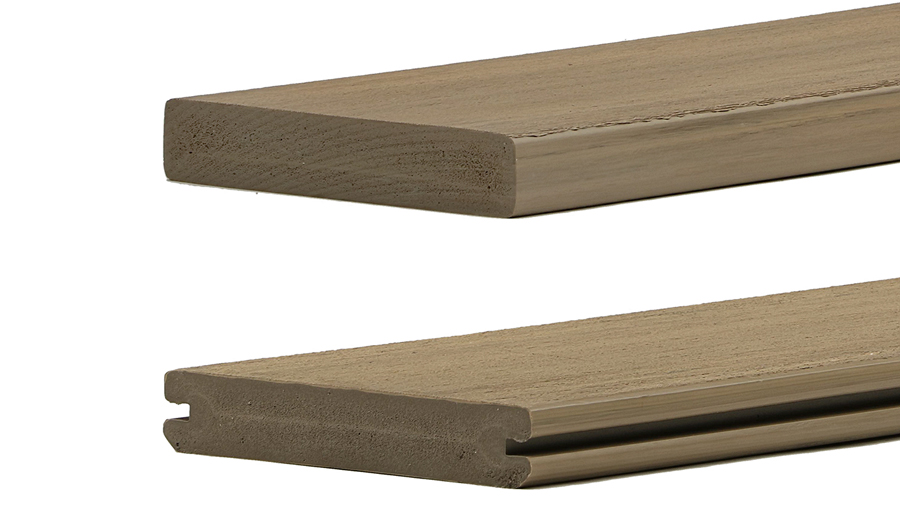
Deck boards are typically 12 or 16 feet long, about an inch thick, and roughly 5-½ inches wide - though wider or narrower boards are a growing trend in deck design. New looks are forming around multi-width deck boards: extra-wide boards and extra-narrow boards that you can combine for eye-catching deck board patterns.
Composite decking can come with two bottom profiles. Solid bottom boards are most common and maximize strength. Boards with scalloped bottoms can lower costs and make boards lighter and easier to transport.
Composite boards typically come in two edge profiles: square-edged boards for a finished look where board edges will be visible and grooved edge boards for use with hidden fasteners.
Below, we’ll dive into each option in a little more detail to help you make the best choices:
Table of Contents:
- Composite decking sizes & profiles explained
- What size and profile do I need on my deck boards?
- Deck board size options
- How long are composite deck boards?
- How wide are composite deck boards?
- How thick are composite deck boards?
- Deck board profile options
Composite Decking Sizes & Profiles Explained
For our discussion, we’ll focus specifically on PVC and composite deck boards, though many of the same principles can apply to pressure-treated wood decking. We prefer PVC or composite decking products and materials like Trex or TimberTech to pressure-treated wood.
While composite boards will cost a little more up front, they’ll quickly make up the gap through better durability and low maintenance demands. Once you factor in the time and money spent staining, inspecting and replacing pressure-treated wood boards, it doesn’t take many months of use for composite decking to become the better-value option.
Learn More:
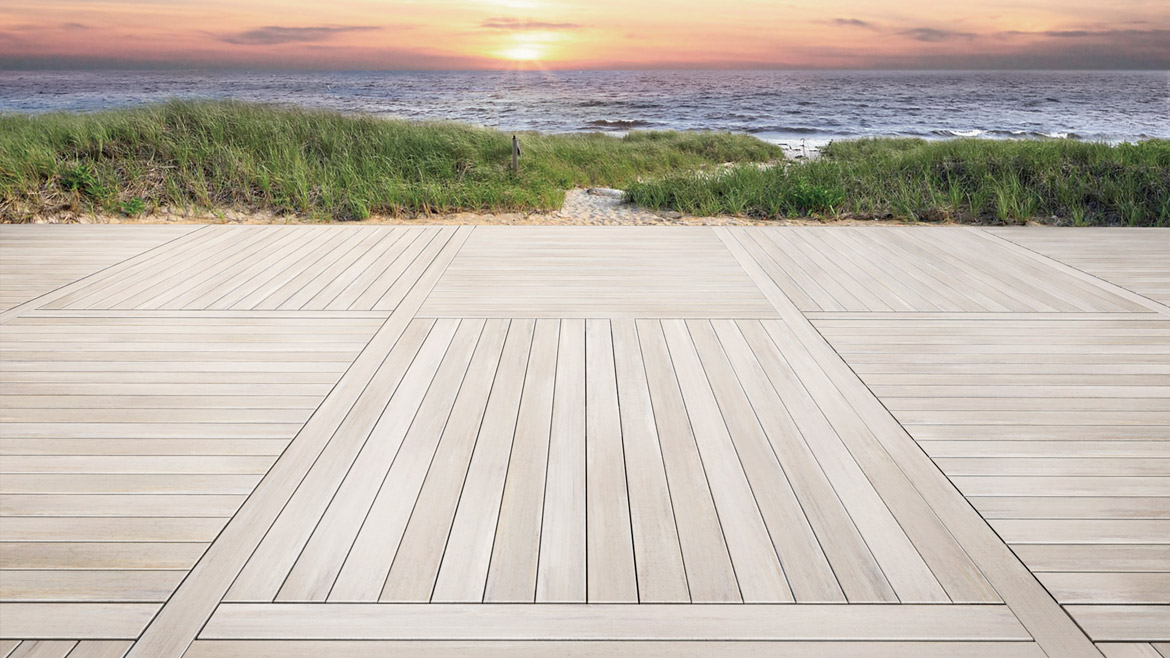
What Size And Profile Do I Need On My Deck Boards?
Deck boards come in a variety of sizes and edge profiles, each serving a different purpose. Check out our high-level guide below to become a DIY expert and pick the sizes and profiles you need for your deck project.
Deck Board Size Options
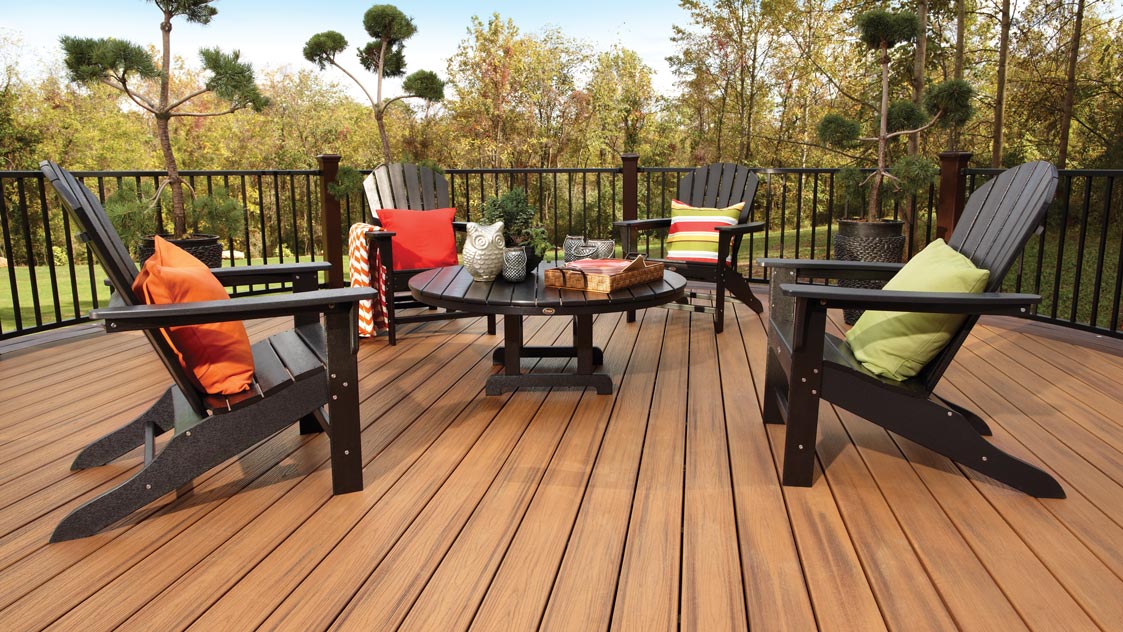
How long are composite deck boards?
Composite deck boards are typically offered in 12-foot and 16-foot lengths. Some brands, like Trex, feature a 20-foot deck board length which can be specially ordered. Composite decking is easy to cut with the right tools, so you can trim the long boards down to the size you need for shorter deck areas, while also getting a smooth, no-gap surface for long portions of your deck.
How wide are composite deck boards?
Composite deck boards usually measure in at 5-1/2 inches wide.
That said, one of the latest trends in the industry is to combine those traditional-width deck boards with extra-wide or extra-narrow boards to create amazing and unique deck board patterns. TimberTech has been a pioneer here, offering 7-1/4-inch wide boards and 3-1/2-inch narrow boards in their PVC-based TimberTech Advanced PVC Vintage Collection:
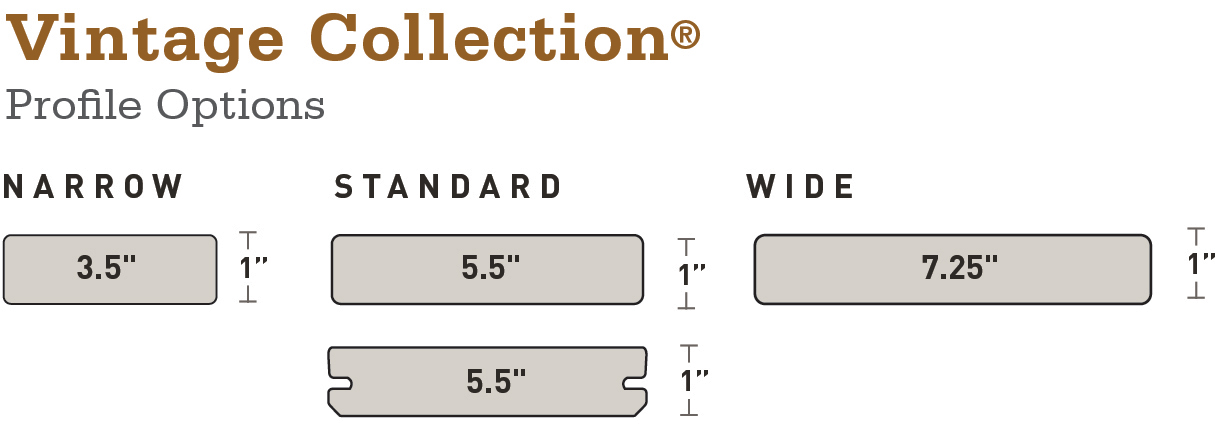
You can combine different widths of deck boards to create one-of-a-kind deck board patters (as shown below) to set your deck apart from the neighborhood.
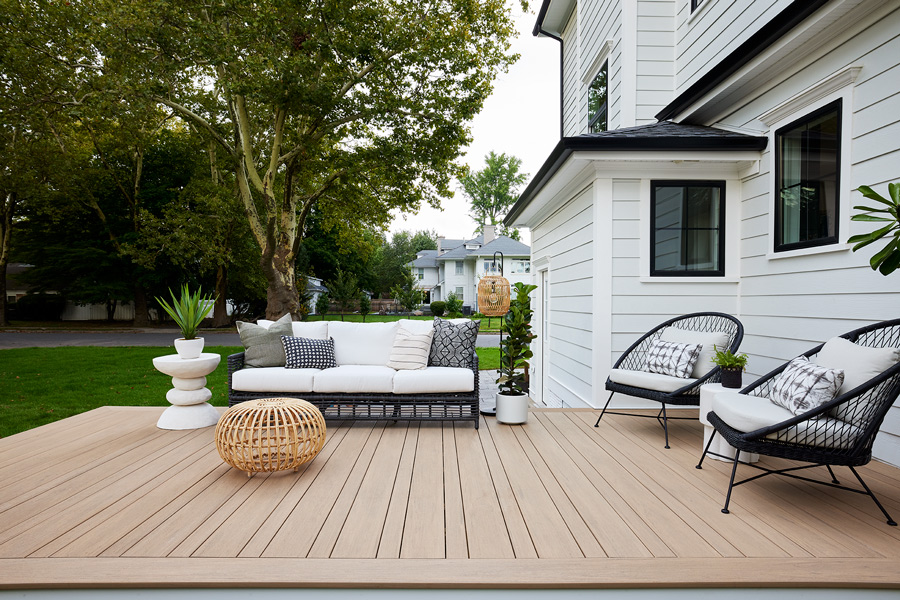
You can find specific dimensions, including board width, in the “Specifications” section of any deck board on our website. You can also give us a call at 1-888-824-5316 to answer any questions you have. When you call DecksDirect, you’ll always get a real, experienced deck project planner answering the phone to help you make the best choices for your deck project.
How thick are composite deck boards?
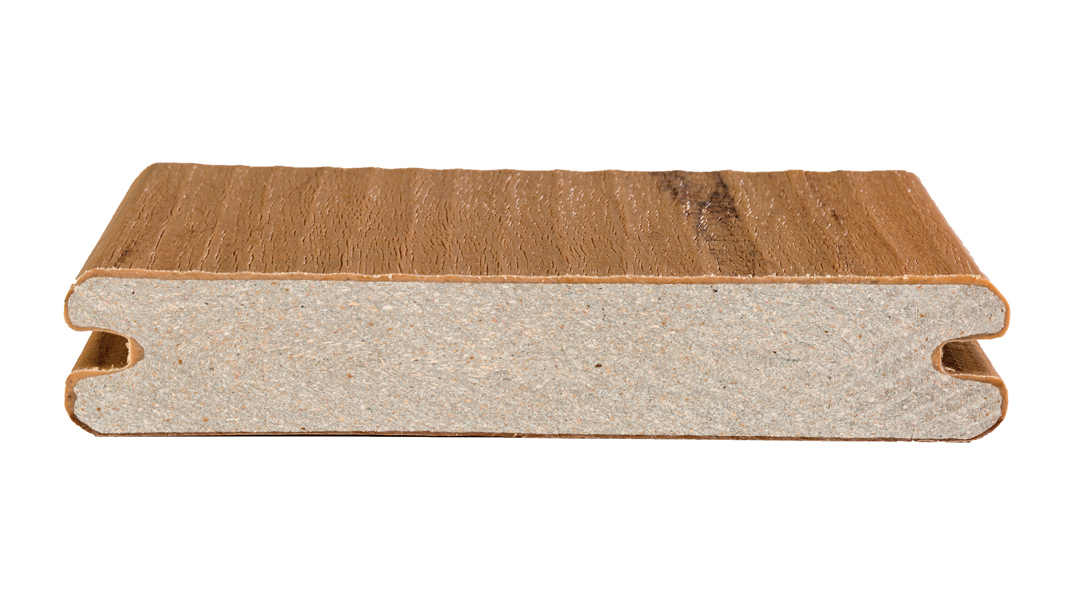
Deck boards are roughly one inch thick, but this can vary from brand to brand and line to line. Some decking lines feature thinner profiles to lower the cost and weight of the boards. For that reason, it’s a good idea to check in with our team to confirm board thickness when renovating a deck to make sure you don’t mix thin boards with thicker boards and create an uneven walking surface.
Deck Board Profile Options
Composite deck boards offer different profiles on the bottom and/or side of the board.
Solid Bottoms vs Scalloped Bottoms
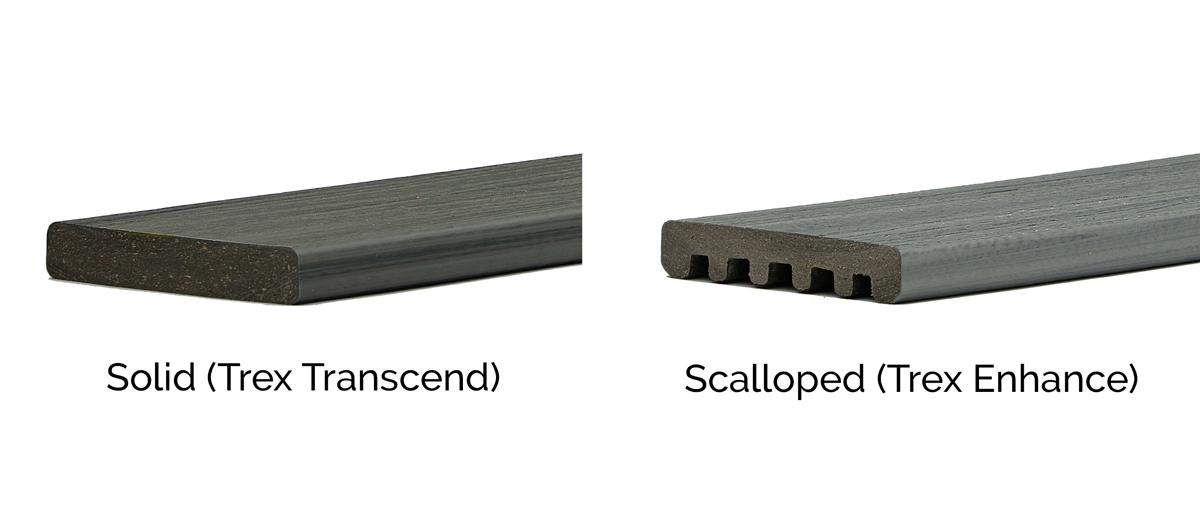
Deck boards typically feature solid bottoms - a flat surface underneath your deck boards and a consistent thickness across the board. This is the nationwide standard deck board profile, maximizing the overall strength of your boards. The example shown above is Trex's Transcend decking line.
Some decking lines offer scalloped bottoms: that means the boards have long ridges or grooves underneath, as pictured in the Trex Enhance line on the right side of the photo above. Because scalloped boards don’t use as much composite material, they’re a bit less expensive than solid-bottom boards, and also lighter and easier to transport.
Square Edge vs Grooved Edge
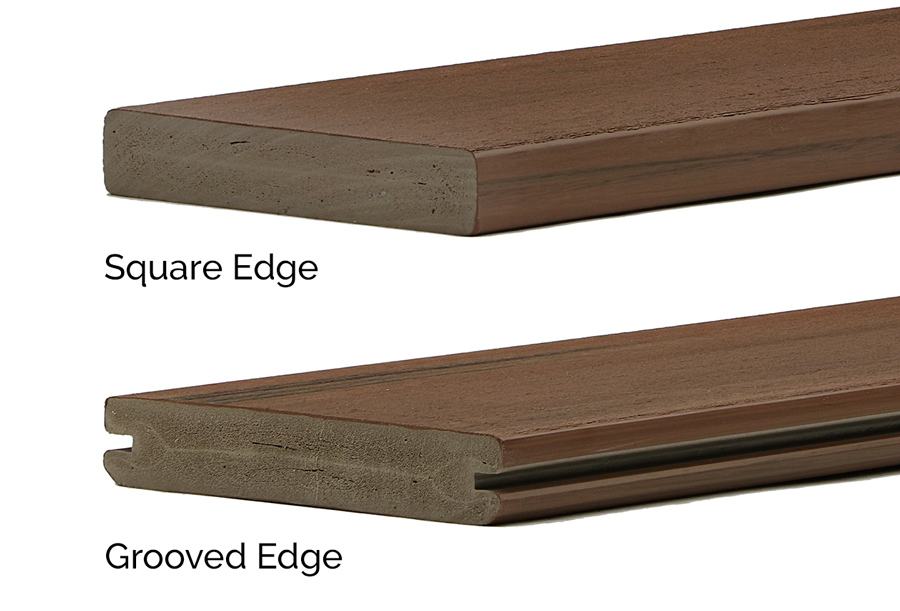
Composite deck boards are available with grooved edges or square edges, each fitting a different installation need.
Grooved edge boards are designed to be used with a wide array of hidden deck fasteners and hidden deck clips like Trex Hideaway, CAMO Deck Fasteners, TigerClaw Hidden Fasteners, and more. These hidden fasteners fit into the grooves on the sides of the deck boards to fasten them to your deck framing. This avoids visible screws or screw-holes on the face of the deck boards and creates a smooth, unblemished deck surface.
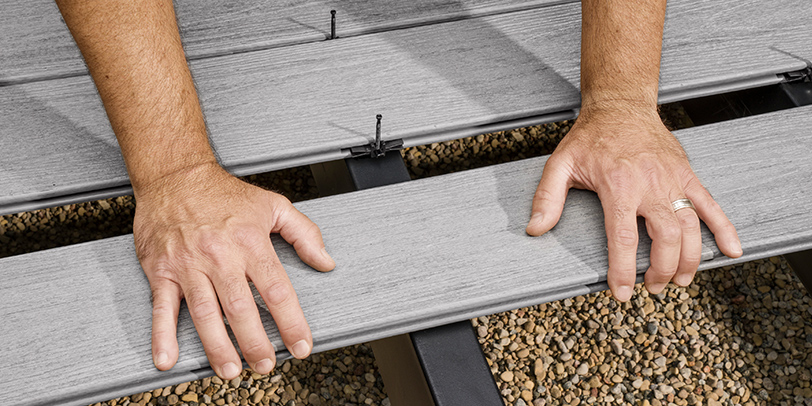
Square edge deck boards are typically installed where a board’s edge will be visible: around the edge of a deck, on star treads, or when you attach a deck board on top of a railing for a stylish drink rail.
_landscape.jpg)
Square edge deck boards are also used when face-fastening deck boards to your frame. This method can leave visible screw heads on your decking surface, but you can also achieve an unblemished look with decking plug systems, made to match nearly any deck color and texture and nearly invisible once installed.
We hope we’ve been able to help you understand your deck project better. If you still have questions, please give us a call at 1-888-824-5316 - our team loves to answer questions and create deck plans! Otherwise, go ahead and put your new knowledge into action, browsing our huge in-stock selection of deck board options.
Shop Decking